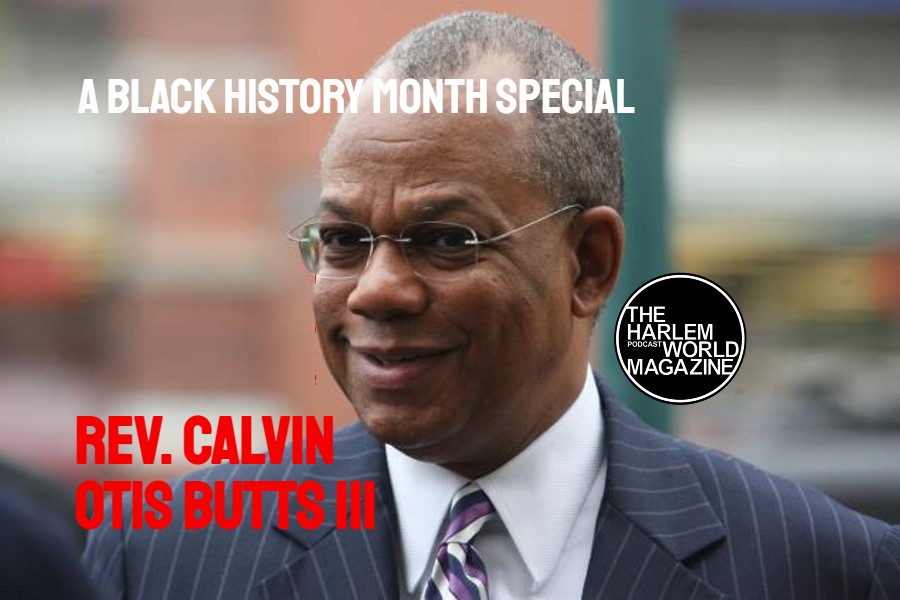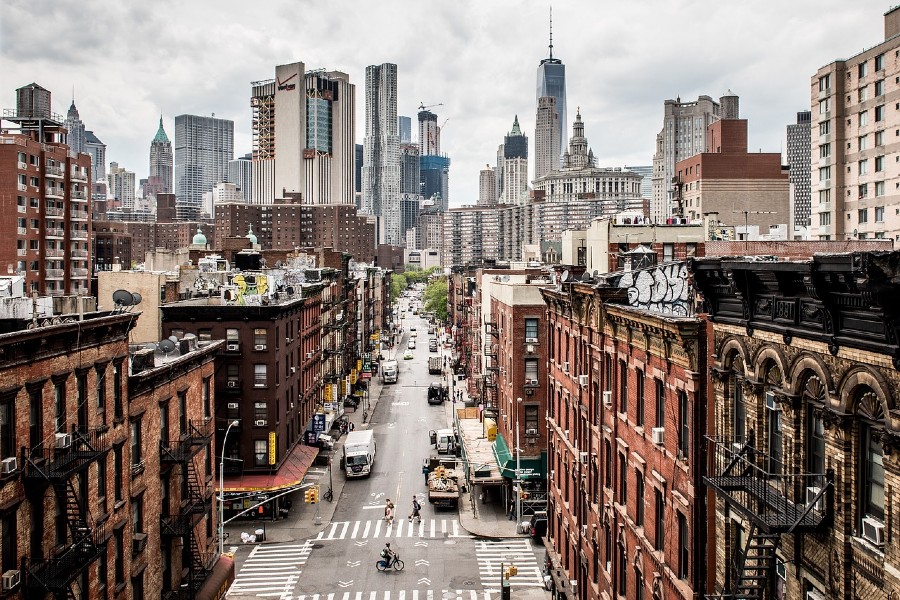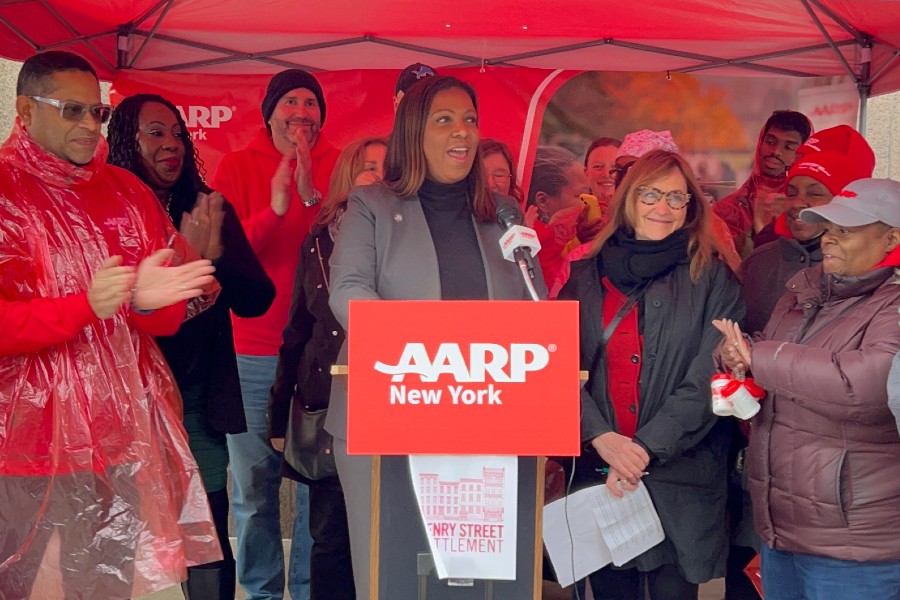The Harlem station in ‘open cut’ was constructed by the New York Central and Hudson River Railroad in 1873-1874 as part of the Park Avenue Improvement. It replaced the ground level station opened in 1844 by the New-York and Harlem Rail-Road. The Improvement widened the railroad to four tracks and got it off street level.
The ‘open cut’ extended from 115th Street to about 130th Street, with one station extending from 125th to 126th Streets. The short platforms were used only by Harlem Division local trains, not trains of the New York Central’s Hudson Division or the New York, New Haven, and Hartford Railroad. Harlem service was greatly expanded in May, 1876 by the rapid transit service operated to Williams Bridge, which with the main Harlem Division services amounted to about an hourly service to Grand Central.
The ‘open cut’ station was used for only about twenty years. A plan to open the Harlem River to navigation took hold in the late 1880’s, culminating in the opening in 1895 of the Ship Canal at 225 Street that provided a deep water connection to the Spuyten Duyvil Creek and the Hudson River. The Park Ave railroad bridge was low and had to open for all but the smallest boats. The New York Central therefore built a higher level drawbridge, and that in turn meant raising track level though Harlem by filling in the cut and replacing it with a steel viaduct similar to the elevated railroads in Manhattan although of somewhat heavier design.
During the reconstruction the tracks were probably relocated to each side of Park Avenue, around November 1895. A temporary Harlem station was built from 124th to 125th Streets and seems to have opened about January 1896. In April the railroad announced plans to build a large new station that would accommodate through trains for the first time in addition to local trains. A New York Times article of the 6th of April noted that “hitherto a few local trains have stopped in the tunnel at 125 Street” and that with the new plan “residents of Harlem will no longer be obliged to go to 42nd Street to get out of New York”. The new drawbridge and viaduct opened in February 1897.
The new Harlem station, the one now known as Harlem – 125 Street on the Metro North, officially opened on the 15th of October 1897. The Times noted on the 8th of October that it replaced the “small, dingy station down in the old Park Avenue cut, where the trains formerly ran”, and added:
Directly under the station is a large cellar, formed by that portion of the old cut which has not been filled in. This has been cemented, and here are steam-heating and electric-lighting plants. A portion of this cellar will be transformed into a vault for the storage of books and papers belonging to the company.
Because the abandoned station is now underground, it qualifies as an abandoned underground station.
Facing downtown, we see the station, the stone-walled cut, the iron fences and bridges, and the 125 Street Crosstown horse car (above). The station platform is under the street surface, and accessible only by stairs at each end. The platform is three steps up from the floor of the cut. The sky suggests night; the shadows suggest mid morning.
Trains ran left-handed in Park Avenue because at Grand Central the arriving platforms and engine yard were on the left side. In order to keep engines out of the trainshed at Grand Central Depot, the procedure for over thirty years was to separate the engine and train en route near the terminal, a maneuver called a “flying switch”. The engine was switched into the yard, and then the switch was quickly re-set so the train could coast into the station and be brought to a stop with hand brakes.
In another view from track level, the entire short length of the station can be seen. Much artistic license is taken: the passengers spilling over the local track with baggage, the flagman waving at the departing train, and the trains keeping to the right. But the detail of the station seems true to life, and the artist merely populated it with the people and trains for dramatic effect. Compare the three steps down from the platform, where these passengers should be standing, with the picture above. The station may have been painted in bright colors. There are windows in the walls, so there must have been spaces under the street for a ticket office, waiting rooms, and the usual closets.
Related articles

Become a Harlem Insider!
By submitting this form, you are consenting to receive marketing emails from: Harlem World Magazine, 2521 1/2 west 42nd street, Los Angeles, CA, 90008, https://www.harlemworldmagazine.com. You can revoke your consent to receive emails at any time by using the SafeUnsubscribe® link, found at the bottom of every email. Emails are serviced by Constant Contact

























